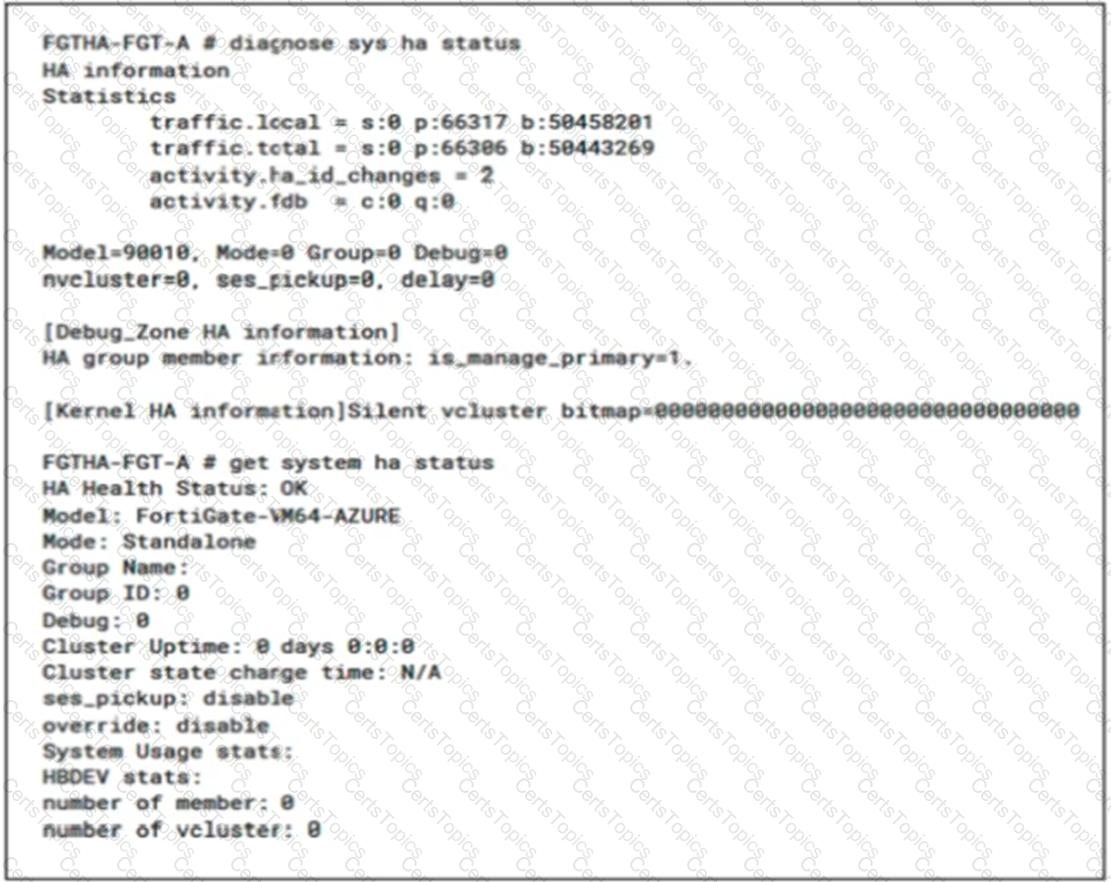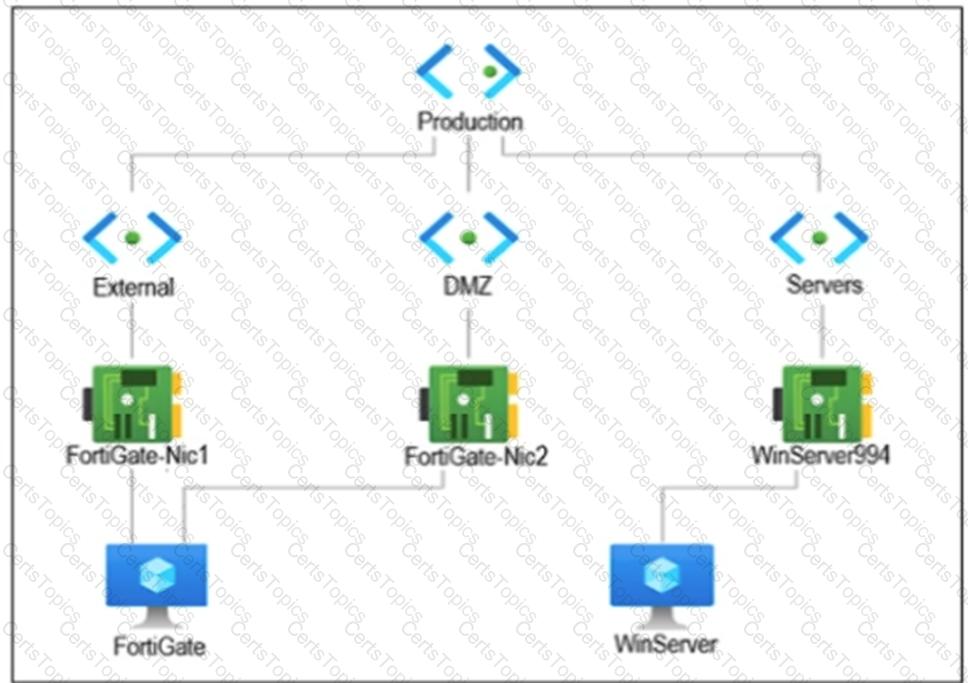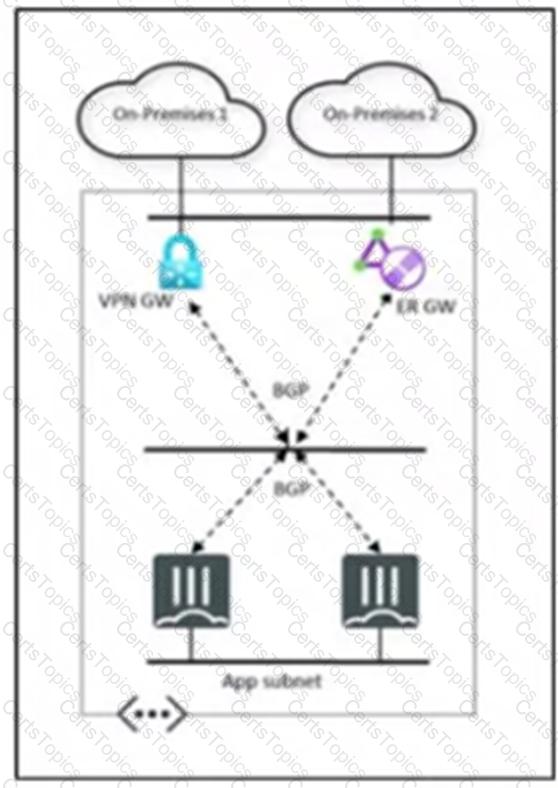What is a key advantage of the branch-to-hub to hub-to-branch topology in an Azure virtual WAN?
What characterizes the branch-to-branch topology in an Azure virtual WAN?
Your organization is in the process of optimizing its Azure network architecture and wants to dynamically manage and exchange routing information between its virtual networks and on-premises networks.
Which Azure service would help to provide a centralized point for efficient route management and dynamic routing?
Refer to the exhibit.

A high availability, active-active FortiGate with Elastic Load Balancing (ELB) and Internal Load Balancing (ILB) was deployed in your Azure environment.
Which tools can you use to configure synchronization? (Choose two.)
Refer to the exhibit.

You are troubleshooting a network connectivity issue between two VMs that are deployed in Azure.
One VM is a FortiGate that has one interface in the DMZ subnet, which is in the Production VNet. The other VM is a Windows Server in the Servers subnet, which is also in the Production VNet. You cannot ping the Windows Server from the FortiGate VM.
What is the reason for this?
After integrating a FortiGate VM with Azure Route Server, you detect that routes are not propagating successfully.
What initial step could you perform to diagnose the root cause?
Refer to the exhibit.

Your company runs front-end web servers in Azure. You need to deploy a Linux VM to be used as a web server.
To protect your web servers with a web application firewall (WAF), you deploy FortiWeb to secure applications from web-based attacks.
Which FortiWeb operation mode can you implement for this scenario?
In the context of Azure Route Server, what is a primary function of the route server subnet?
Refer to the exhibit.

In an expanding corporation, the different branches share resources connecting to Azure through Azure VPN Gateway and ExpressRoute Gateway.
Which Azure solution can you implement to simplify and centralize the seamless sharing of the dynamic routing between FortiGate VMs and branches?
How does Azure ExpressRoute contribute to achieving predictable latency for network traffic?